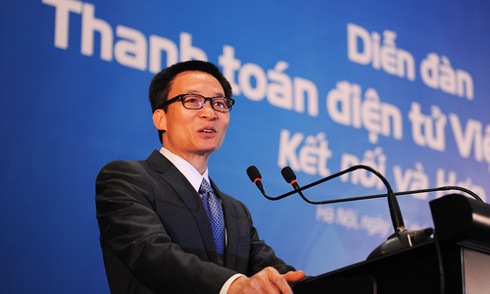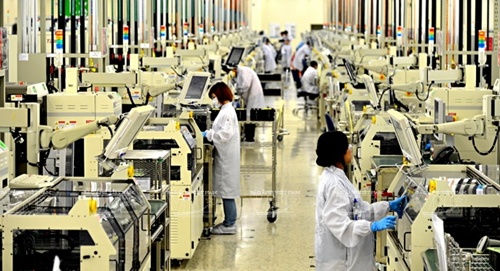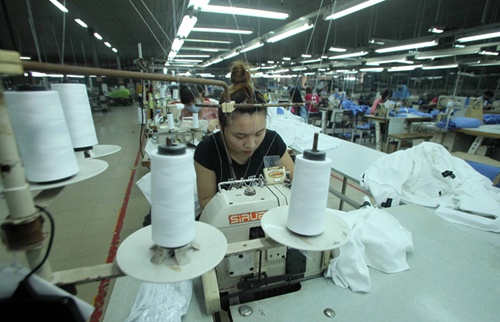Cash payment habit still popular
Cash payment habit still popular
Deputy Prime Minister Vu Duc Dam today urged closer co-operation among ministries and sectors to reduce the prevalence of cash payments and create conditions that encourage people to use electronic payment systems.

Speaking at the Viet Nam E-Payment Forum 2015 held in Ha Noi, Dam said that although Viet Nam's e-commerce market has seen recent growth, in-cash habits in Viet Nam is still overwhelmingly popular, accounting for 65 per cent of total payment transactions.
"This habit has hampered the country's economic development as well as people's living standards," he said.
Dam highlighted how other countries' electronic payment behaviour accounts for 90 per cent of their total payment values and helped increase their GDP by about 1 per cent.
With more than 120 million mobile subscriptions and more than 40 million Internet users in Viet Nam at present, electronic transaction processes have a lot of potential, he said.
The Deputy PM said that in 2014, e–commerce in Viet Nam was valued at US$2.97 billion, and was expected to reach about $4 billion in 2015 and $7 billion in 2017.
There are many direct transactions between people and the government, such as paying taxes or paying for public services like electricity or water, transactions that he argued could make a big market for electronic payments.
"Although the e – payment has a huge potential and many advantages, its growth is still lower than the Government's expectation," said Dam.
Revenue from online tax payment still low
Sharing the Deputy PM's opinion, Deputy Governor of Central Bank Nguyen Toan Thang spoke at the conference about banks' actively implementation of electronic tax collection. Despite the large number of businesses registered to enter e-tax payment, the actual use was moderate, he said.
One of the main reasons for the discrepancy is that e-tax payment relies on information technology that requires co-ordination between various agencies, and therefore has been hard to implement, said Thang.
He said the central bank, in co-ordination with the Ministry of Finance, provided concrete measures to set up a smooth electronic connection system and conditions favourable for tax payers.
Thang called for support from foreign organizations to help Viet Nam develop electronic payment systems.
"I am very optimistic about e-payment, however, besides efforts by relevant agencies and ministries, we need co-operation with foreign institutions," he said.
According to Thang, to make companies and people accept this new mode of payment, the government should offer incentives.
Visa's Country Manager for Viet Nam, Cambodia and Laos, Sean Preston, said he has lived in Viet Nam for a long time, long enough to see that Vietnamese people are able to access electronic technology and that it had the potential to grow the country's economy.
Deputy General Director of Vietinbank Tran Cong Quynh Lan said the most important thing was to create the favourable conditions for people to change their habits.
"When people go shopping, pay for healthcare or buy train tickets, they need payment instruments. We have co-ordinated with ministries and sectors to bring e-payment service to the customers. Our strategy is not only in internet banking but also on mobiles," said Lan.
Chairman of the Viet Nam Chamber of Commerce and Industry (VCCI) Vu Tien Loc said online tax payments could contribute to administrative reforms required by Viet Nam's free trade agreements and growth in information technology.
He said that paying taxes online could motivate companies to become more transparent and modern, advising that the government should design a software system to meet international standards to boost online tax payment.
At the conference, many experts agreed that the country's e-commerce sector has potential, but that the cash payment habit remains a big and resilient hurdle for its growth.
According to statistics issued by the Viet Nam Bank Card Association, 90 per cent of card payment revenue came from transactions at ATM machines. Of this figure, 85 per cent came from money withdrawal, 14 per cent from transfers and the remainder was payments.




















